June 3, 2017
A little scenery for a change
For a change from all of the flower photos that I have posted lately, here are a few scenery shots taken on today’s hike into the Coeur d’Alene Mountains on the south side of the Clark Fork River. The taller peaks are all over 7,000 feet in elevation and are inside the 57 square mile Cherry Peak Roadless Area, one of my favorite places. Access to the edge of the roadless area is a Forest Service road that can be driven for about 10 miles at which point the remainder is closed by a gate for wildlife protection but open to foot or horse traffic. These photos were taken from that road as I hiked about 4 miles up it to get a good open look at the peaks from an elevation of about 5,500 feet: the valley below is at an elevation of about 2,400 feet. This is very wild country and so you are never sure of just what you might meet or see.
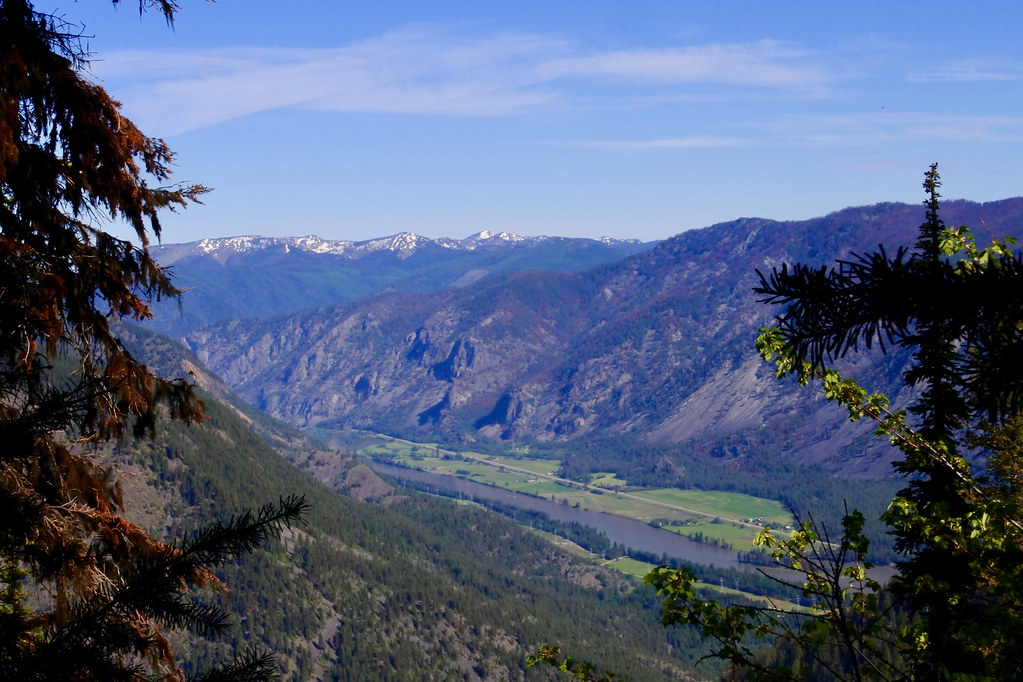
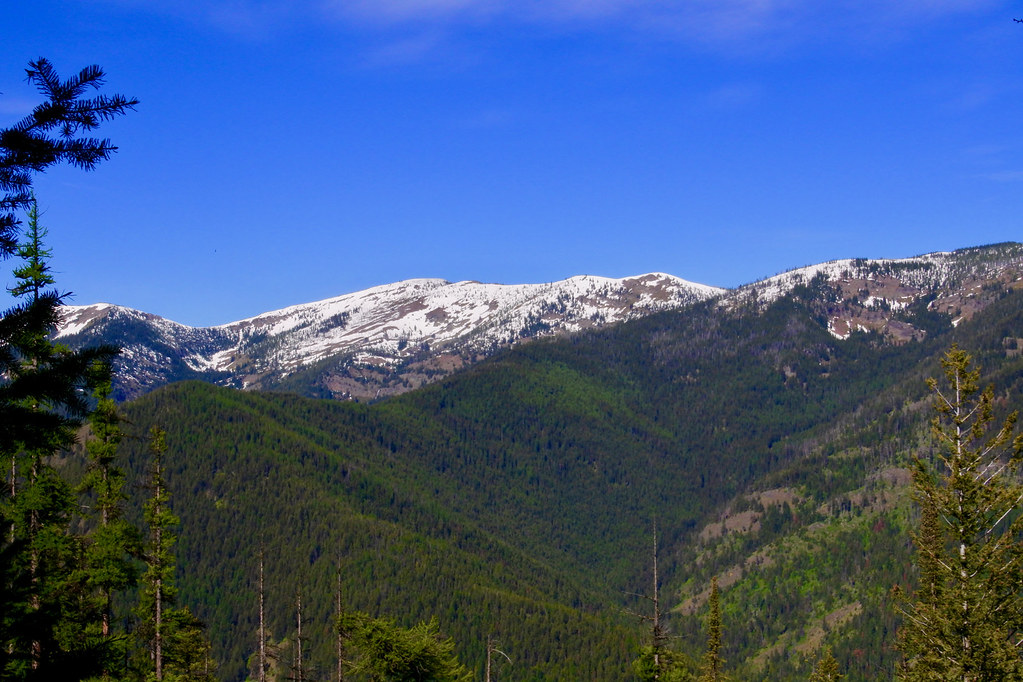
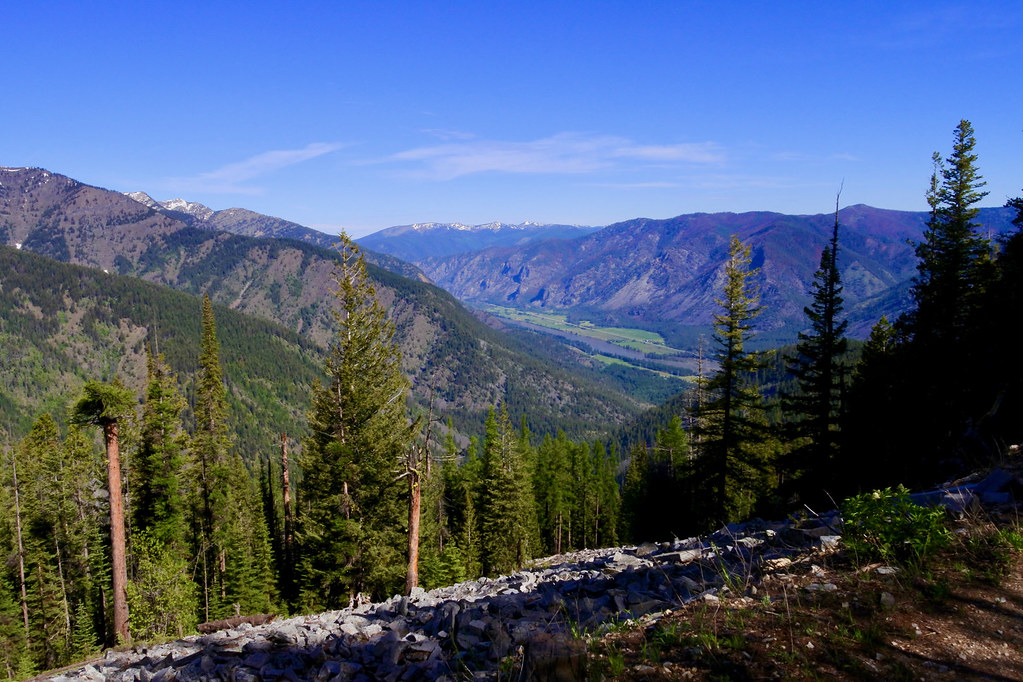
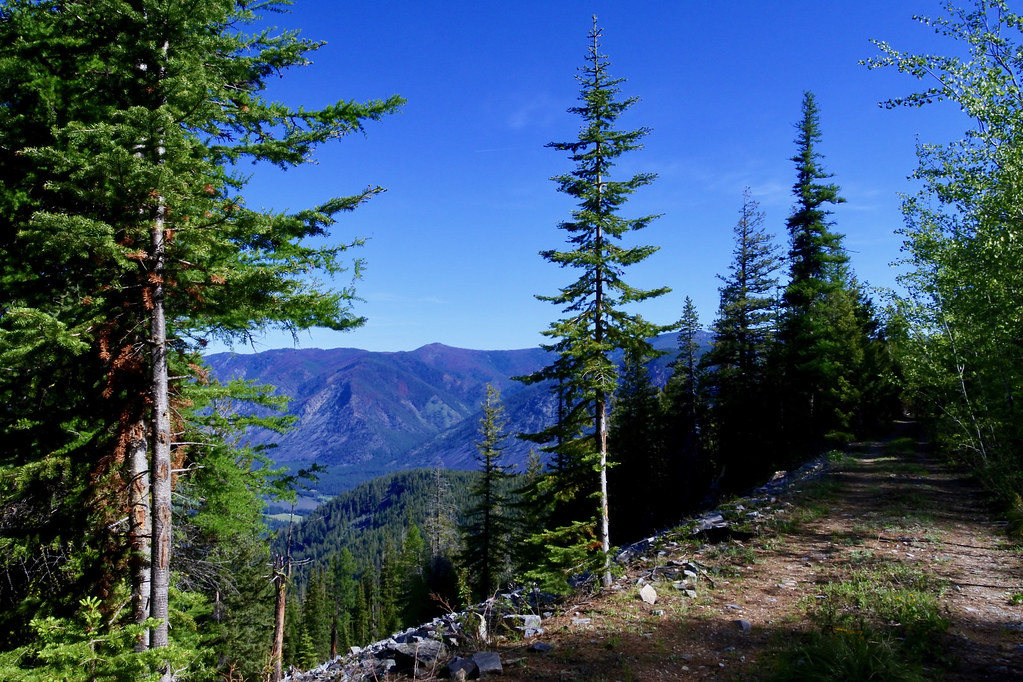

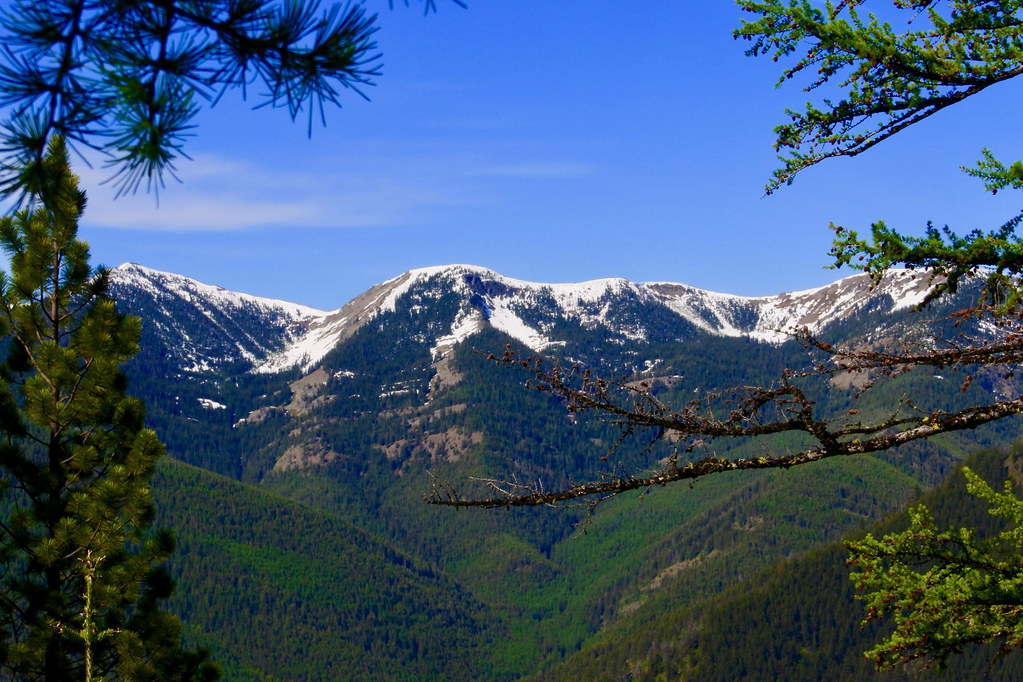
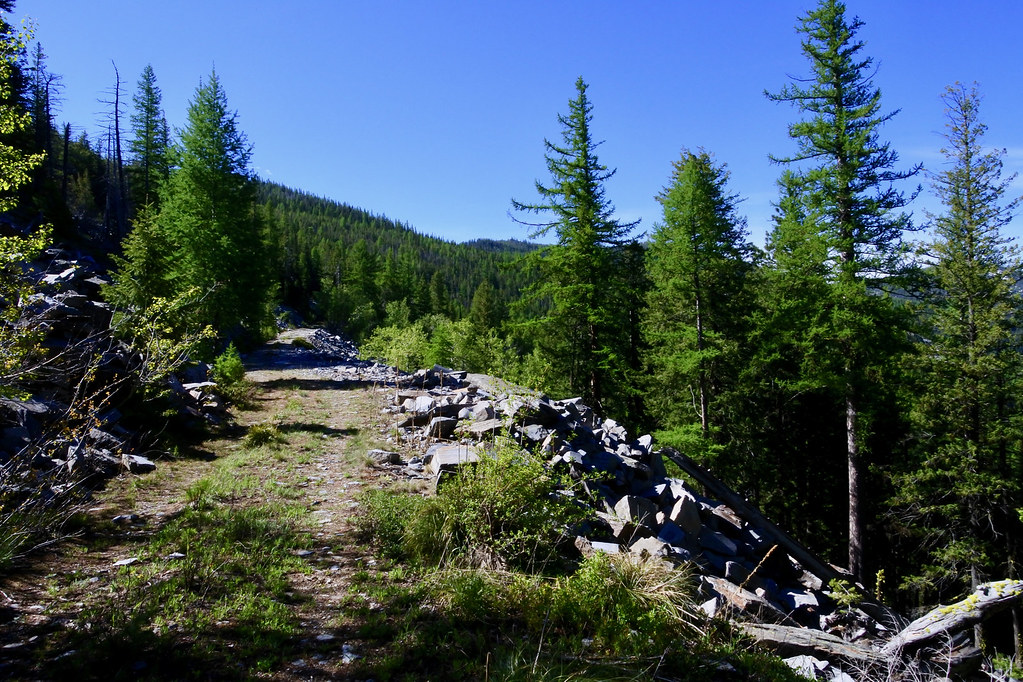

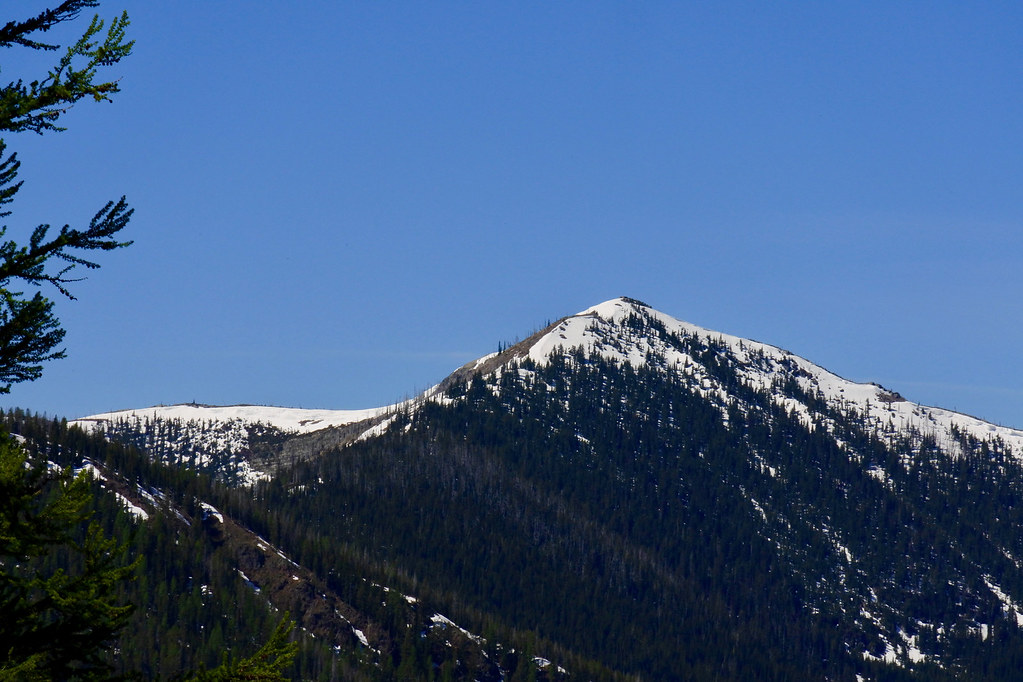

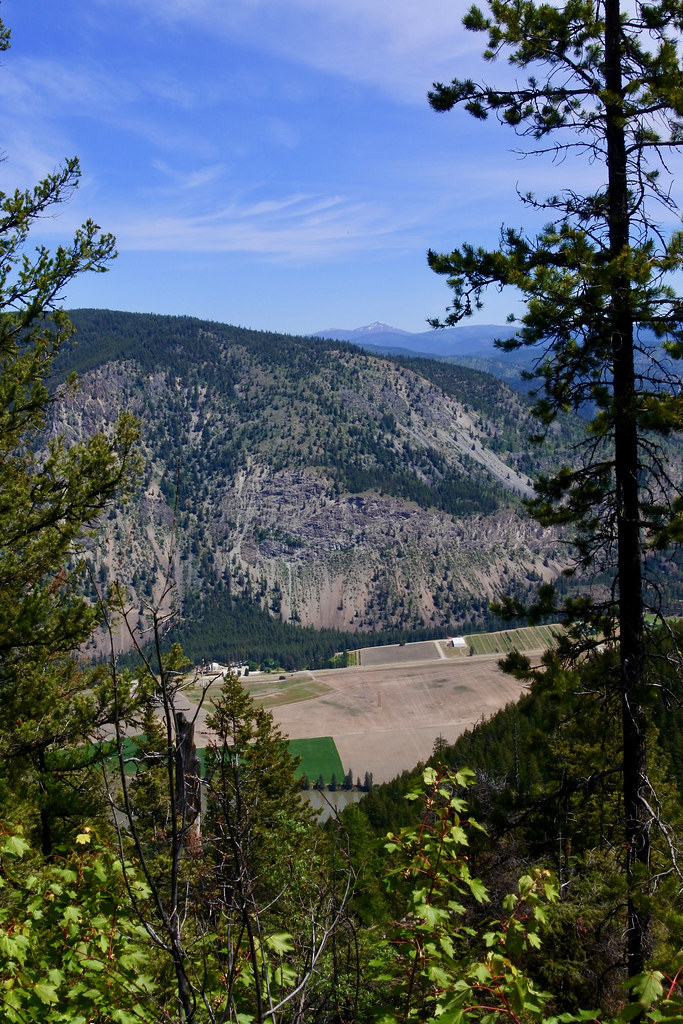
RSS feed for comments on this post. TrackBack URI











I kept expecting to see a grizzly as I scrolled down through the photos.
LikeLiked by 1 person
Comment by wordsfromanneli — June 3, 2017 @ 8:21 pm
That area does not have any grizzlies in residence, and I can’t say that I’m unhappy about that. The forest is very thick there and imposes on the trails which would tend to make a Grizz encounter very dangerous. I have seen many black bears throughout the area though and I love that. It’s also an excellent home for Spruce Grouse and has coyotes, Lions and wolves and I think the potential for Lynx although I’ve not seen one. Lots of deer, elk and moose too.
LikeLiked by 1 person
Comment by montucky — June 3, 2017 @ 8:50 pm
Lots of life up there. Glad the grizzlies are elsewhere.
LikeLike
Comment by wordsfromanneli — June 4, 2017 @ 9:05 am
I’ve never understood why they haven’t gotten in there. The southern edge of their range is within 50 miles to the northwest and crossing the river would not be a problem for them. It’s great habitat for Black bears. Perhaps 57 square miles isn’t enough range for them.
LikeLiked by 1 person
Comment by montucky — June 4, 2017 @ 9:15 am
Let’s hope it stays that way. We’ve had a few show up on Vancouver Island and they’ve had to swim from the mainland. They must go from island to island so the swim isn’t as long as it might be.
LikeLiked by 1 person
Comment by wordsfromanneli — June 4, 2017 @ 1:25 pm
Change of course is great.. Thanks.
LikeLiked by 1 person
Comment by nvsubbaraman — June 3, 2017 @ 8:25 pm
I will still post photos of many flowers that are blooming there now.
LikeLike
Comment by montucky — June 3, 2017 @ 8:44 pm
Please do. Looking forward with great interest. All are lovely. Thanks.
LikeLiked by 1 person
Comment by nvsubbaraman — June 3, 2017 @ 8:52 pm
I think we will dub you the “John Muir” of NW Montana. You are always out and about in the backwoods and trails of the area.
LikeLiked by 1 person
Comment by Ron Mangels — June 3, 2017 @ 11:24 pm
I don’t know about that Ron, but I will spend as much time in the back country as I possibly can. Things make sense out there.
LikeLike
Comment by montucky — June 4, 2017 @ 6:46 am
And you take much better pictures than John Muir ever took!
LikeLike
Comment by jpostol — June 4, 2017 @ 12:49 pm
I like mountains too. Actually any kind of back country. Western roads stay passable longer than eastern ones.
LikeLiked by 1 person
Comment by windyhillx — June 4, 2017 @ 6:16 am
I have no experience in the eastern forests, but I would imaging things grow faster there because there is more rainfall and better soil conditions. Our mountains are very rocky, the soil is shallow, and our average precipitation is only 15 inches. When large sections of forest are destroyed for whatever reason “civilization” chooses to destroy it, the complete recovery process takes centuries.
LikeLike
Comment by montucky — June 4, 2017 @ 6:54 am
More rainfall and a much longer growing season in many parts of the northeast, but soils are highly variable. Of course things grow much faster indeed in the southeastern forests, and the diversity of tree species is much higher there. What are the trees in these photos? Some of them look like lodgepole pine.
LikeLiked by 1 person
Comment by jpostol — June 4, 2017 @ 12:52 pm
The trees in that area are mostly Lodgepole Pine, Western Larch, Douglas Fir and Sub-alpine Fir, with some Ponderosa Pine and Hemlock also in the mix. Pockets in some areas also have Aspen and Black Cottonwood.
LikeLiked by 1 person
Comment by montucky — June 4, 2017 @ 1:59 pm
Thanks–nice to know. It is high and north there, that’s for sure, from those species and the photos. I know some of these trees from farther south in the Rockies and into the Southwest–I love cottonwood and Ponderosa Pine (although I’m not sure which species of cottonwood I’ve seen), and aspen are also very nice. I would guess the aspen there are on unstable slopes and the cottonwood is along streams, but I don’t have a good feeling for the others. Obviously here in the northeast we have a lot of oaks, maples, birch, and other deciduous trees, white pine and where I live on Long Island, pitch pines and scrub oaks. It’s nice to make the acquaintance of the different plant species, and you are clearly a close friend of many of them!
LikeLiked by 1 person
Comment by jpostol — June 4, 2017 @ 5:20 pm
I really wish I knew more about the various plant species. Had I been as exposed to them when of college age I could easily have become a botanist. There is so much fascination there!
LikeLike
Comment by montucky — June 4, 2017 @ 6:09 pm
Wow this is amazing. This gives a good view of what it takes to be prepared.
LikeLiked by 1 person
Comment by John Purdy — June 4, 2017 @ 7:34 am
Yes, you need to be ready for just about anything, but the rewards are wonderful. Just the feeling of being there and feeling comfortable in the back country is unlike anything else I’ve known. The wild country in its original state is an exciting yet comforting place in which to be.
LikeLike
Comment by montucky — June 4, 2017 @ 1:50 pm
While I understand your comment that “things make sense” out there on the trails, the comment also reminds me of just how much you understand about that world. It takes time to develop a relationship with a part of the world, just like it takes time to develop a relationship with a person. That’s why we have so many accidents and unfortunate experiences on the water here, at the beginning of the tourist season. People who don’t understand the water — tides, rip currents, creatures like jellyfish or stingrays — go happily along, until they realize just how much they don’t understand. I’d never hit the trails you show here by myself — I’m willing to go off into the woods or prairie or canyons by myself, but I research, and choose pretty carefully.
LikeLiked by 2 people
Comment by shoreacres — June 4, 2017 @ 9:12 am
Exactly and very well put, Linda. And I think that is precisely in the middle of the problem facing our wild areas and much of the remaining natural world as well. It takes time and experience to understand it and as time goes by and more urbanization takes place, a smaller percentage of our population does understand, especially those in political power. It makes it easy for the exploiters and extractors to damage it without even realizing what they are doing. Our western mountains are especially vulnerable because of rocky, poor soil and little rainfall (the average annual precipitation in Montana is only about 15 inches and most deserts average around 10 inches). Recovery from damage here takes many generations. By comparison, the tree plantations on the east part of North Carolina receive from 40 to 55 inches.
LikeLiked by 2 people
Comment by montucky — June 4, 2017 @ 9:27 am
Yes, Terry…things do make sense out there, don’t they? You’ve captured some beautiful scenery…places that make my heart yearn to be there with you. Thank you, as always, for sharing your little bit of paradise.
LikeLiked by 1 person
Comment by seekraz — June 4, 2017 @ 12:40 pm
The trails are finally becoming usable again now that a lot of the snow has melted. You know how good that feels!
LikeLike
Comment by montucky — June 4, 2017 @ 1:41 pm
You know, I never get tired of looking at your photos, no matter what the subject. 🙂
LikeLiked by 1 person
Comment by Mama's Empty Nest — June 5, 2017 @ 1:49 pm
I’m so glad that you enjoy them. That’s why I post photos. I started bringing back photos taken on my hikes many years ago so my wife could see what I saw. (She was physically unable to hike with me.) Then I found that others also liked to see scenery and other things from Montana’s back country and so I started this blog.
LikeLiked by 1 person
Comment by montucky — June 6, 2017 @ 7:25 pm
Well, I for one, am sure glad you started the blog and are willing to share all your gorgeous photos with us. I bet your wife truly enjoyed every minute of them too!
LikeLiked by 1 person
Comment by Mama's Empty Nest — June 6, 2017 @ 7:49 pm
She did. As soon as I returned from a hike she would want to see the photos.
LikeLiked by 1 person
Comment by montucky — June 6, 2017 @ 7:56 pm
Breathtakingly beautiful scenery you have.
LikeLiked by 1 person
Comment by Candace — June 6, 2017 @ 6:50 pm
It is. That’s one of the reasons why I spend so much time in the high country on the trails and old roads. You can sure get away from the rest of the world up there.
LikeLiked by 1 person
Comment by montucky — June 6, 2017 @ 7:26 pm
Beautiful – so many fresh greens, although the distant peaks still look wintry!
LikeLiked by 1 person
Comment by Jo Woolf — June 6, 2017 @ 11:56 pm
Yes, the peaks still have snow, but much has melted in the last few weeks, allowing some access to the high trails.
LikeLiked by 1 person
Comment by montucky — June 7, 2017 @ 7:06 am
Sigh. Landscapes to my mind. The eye and the soul rest in these landscapes. Thank You showing these photos.
LikeLiked by 1 person
Comment by Sartenada — June 7, 2017 @ 2:09 am
Now that the snow is melting I hope to be able to show much more scenery in the high country as summer goes by.
LikeLike
Comment by montucky — June 7, 2017 @ 7:07 am
Wonderful places………
LikeLiked by 1 person
Comment by Rajesh Kumar — July 4, 2017 @ 11:59 pm
Yes, I think so too!
LikeLike
Comment by montucky — July 5, 2017 @ 6:45 am